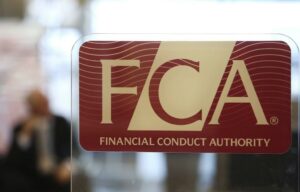India’s organised gold loan market is projected to double in next five years to Rs 14.19 lakh crore despite expected moderation in growth due to stricter regulations, said a PwC India report. In fiscal 2023-24, the organised gold loan market demonstrated substantial growth, reaching a valuation of Rs 7.1 lakh crore, according to the report titled ‘Striking gold: The rise of India’s gold loan market’ .
“It is expected to reach around Rs 14.19 lakh crore by FY 2029 at a five-year CAGR of 14.85 per cent,” it said.
Indian families own massive quantities of gold, estimated at 25,000 tonne. Existing gold holdings with Indian households are valued at roughly Rs 126 lakh crore, the report said.
It further said the gold loan market is poised to see moderate growth over the next two years, as gold lenders are facing increased scrutiny from regulatory authorities regarding loan-to-value (LTV) maintenance and auction-related procedures.
“The second-largest player in the gold loan market being inactive would have an impact on market growth in FY25,” the report said.
Also, the RBI’s advisory to NBFCs on cash disbursement, which limits the amount of cash disbursal to Rs 20,000, could push customers to rely on the unorganised sector.
The regulator has also raised concerns about the evaluation process for lending activities through fintech startups.
The increased regulatory scrutiny and revised guidelines have led to a dip in the share prices of leading NBFCs, PwC said.
“Gold loan lenders are expected to use this period to ensure that they are compliant with all regulatory guidelines while undertaking several measures to optimise their middle and back offices through digitisation initiatives,” it said.
Lenders are also expected to implement cost optimisation initiatives that will help drive up the bottom-line profitability of their companies and enhance investor confidence which has slightly depleted as a result of the regulatory scrutiny.
Furthermore, the report said rising gold prices over the past financial year may also drive lenders to take a cautious approach to lending rates and pricing as any downward movement in gold prices will result in a substantial LTV breach that will further create operational issues for lenders in the form of auctions.
“The growth of the gold loan market is expected to be steered by both banks and NBFCs,” the report said.
The emergence of digital gold loan aggregator platforms and their strategic collaboration with gold loan lenders such as banks and NBFCs will be a key driving factor for the growth of the industry, enabling gold loan lenders to tap into a previously untapped segment of digitally savvy customers.
“While the forecasted growth of the gold loan market means potential growth for all players, the impact on the players may vary. Banks are expected to benefit from their lower interest rates,” PwC said.
Jaikrishnan G, Partner (Financial Services), PwC India said lending against gold is the oldest form of credit. It remains one of the most attractive options for consumer as well as lenders.
“High return-on-assets, manageable risk, timely regulatory interventions, growing adoption, tech-enabled operating models have all contributed to sector growth. As India embraces the vision of Viksit Bharat, gold loans will provide much needed liquidity and credit access to growing small and medium entrepreneur segments,” he said.
The report further said growth by NBFCs is expected to be fuelled by their expansion and increased outreach to regions with low penetration, bringing new credit customers to the financial services ecosystem.
Also, fintechs will play a critical role in bringing in the required technology and innovation into the industry, thus helping lenders to create unique product propositions to boost growth, it said.
South India contributes to a vast extent, as it emerges as the dominant market for gold loans, with 79.1 per cent share of the total outstanding loans.
The report also noted that an assumption can be made that the entire Rs 126 lakh crore worth of gold will not be available for pledging due to various reasons like jewellery belonging to religious institutions, jewellery with emotional value, and certain jewellery held by individuals who are not in need of finance.










